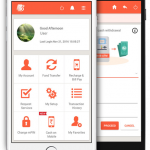10 Best Practices to Prevent a Data Breach
In today’s digital world, unauthorized access to data, known as a data breach, is a significant issue for businesses. Data breaches can happen to any size of business and can compromise sensitive information such as client data, financial records, and intellectual property.
As the cost of data breaches continues to surge, it is important for organizations to take proactive steps to safeguard their digital assets. This blog will examine what a data breach is, its common causes, impacts, and best practices to prevent it.
What is a Data Breach?
A data breach occurs when unauthorized individuals gain access to sensitive, confidential, or protected data, either by accidental mishap or deliberate intrusion. This breach can take various forms, including but not limited to:
- Unauthorized access to databases
- Theft or loss of physical devices like laptops or USB drives containing sensitive data
- Malware or ransomware attacks that compromise data integrity
- Social engineering tactics, such as phishing, to trick individuals into revealing sensitive information
- Insider threats where employees or trusted individuals misuse their access privileges
Common Causes of Data Breaches
Understanding the causes of data breaches is essential for building robust prevention strategies. Some primary reasons include:
- Weak Passwords: Passwords that are easy to guess or crack provide an open door for cybercriminals.
- Phishing Attacks: Deceptive emails and messages trick users into revealing sensitive information.
- Unpatched Software: Failure to update software leaves vulnerabilities open for exploitation.
- Insider Threats: Disgruntled or negligent employees can compromise data intentionally or accidentally.
- Lost or Stolen Devices: Physical devices like laptops or smartphones containing data can be lost or stolen.
- Malware and Ransomware: Malicious software can infiltrate systems and encrypt or steal data.
- Third-Party Security Weaknesses: Suppliers or partners with inadequate security measures can be an entry point for attackers.
- Inadequate Training: Lack of awareness about security best practices can lead to risky behavior.
- Remote Work Challenges: Unsecured remote work has introduced new vulnerabilities.
- Insufficient Access Controls: Poorly managed user access permissions can allow unauthorized access to data.
Impacts of Data Breaches
The consequences of a data breach can be severe and far-reaching, affecting both organizations and individuals. Here’s a brief look at the potential impact:
- Financial Loss: Data breaches can result in significant financial losses, including fines, legal fees, and the cost of remediation.
- Reputation Damage: A breach can damage an organization’s reputation, eroding customer trust and confidence.
- Legal and Regulatory Consequences: Breached organizations may face legal and regulatory consequences for failing to protect sensitive data.
- Loss of Intellectual Property: For businesses, intellectual property theft can have long-term implications regarding competitiveness and innovation.
- Identity Theft: Individuals affected by data breaches may become victims of identity theft, leading to financial and personal hardships.
Best Practices to Prevent Data Breaches
Preventing data breaches requires a holistic approach that combines technology, policies, and human behavior. Here are ten best practices to bolster your data security efforts:
1. Strong Password Policies
Implement strict password policies that require complex, unique passwords and regular updates. Consider multi-factor authentication (MFA) to add an extra layer of security.
2. Regular Software Updates and Patch Management
Keep all software and systems up to date with the latest security patches. Cybercriminals often target known vulnerabilities in outdated software.
3. Cyber Security Awareness Training
Educating your workforce is one of the most effective ways to prevent data breaches. Regular cyber security awareness training empowers employees to recognize cyber threats and take appropriate steps to avoid or respond to potential threats.
4. Access Control and Principles of Least Privilege
Limit access to sensitive data based on job roles. Only grant the minimum necessary permissions to reduce the risk of insider threats.
5. Encryption
Encrypt sensitive data in transit and at rest to protect it from unauthorized access, even if it is breached.
6. Employee Offboarding Procedures
When employees leave, revoke their access promptly to prevent potential data breaches.
7. Secure Remote Work
Ensure that remote workers follow robust security protocols, such as using virtual private networks (VPNs) and secure connections.
8. Incident Response Plan
Have a well-defined incident response plan to minimize damage and respond promptly if a breach occurs.
9. Data Security Awareness Training
Data security awareness training educates employees on secure data handling, ways to combat data breaches, and compliance with general data protection regulations.
10. Regular Security Audits and Testing
Conduct routine security audits and penetration testing to identify vulnerabilities before attackers do.
Effective Prevention Through Incident Response Planning
Having a well-thought-out incident response plan can mitigate the impact of potential data breaches. In a world where data breaches are a matter of “when,” not “if,” having a well-structured incident response plan is crucial. Here’s why:
- Minimises Damage: A well-executed incident response plan can help minimize the damage caused by a breach.
- Reduces Downtime: Swift response can minimize downtime and get systems back up and running more quickly.
- Protects Reputation: A well-handled breach can save an organization’s reputation and maintain customer trust.
- Ensures Compliance: Many regulations require organizations to have an incident response plan to meet compliance requirements.
Conclusion
Data breaches pose a significant threat in our digital age. By implementing robust cybersecurity measures, training your staff, and having a solid incident response plan, you can significantly reduce the risk of falling victim to a breach. Remember, data security is an ongoing process, and staying vigilant is critical to safeguarding your organization’s most valuable asset: its data.















